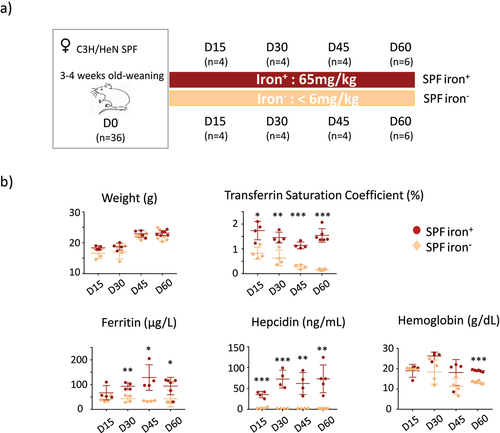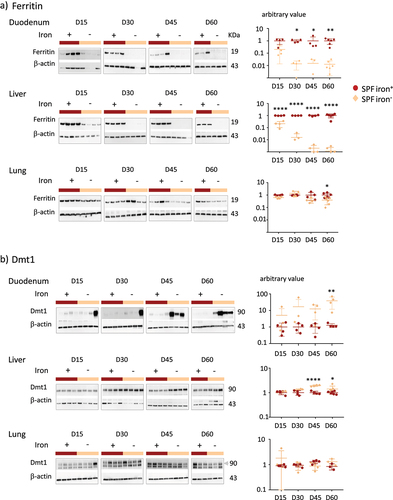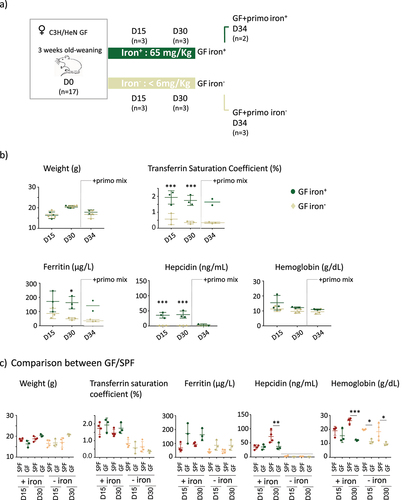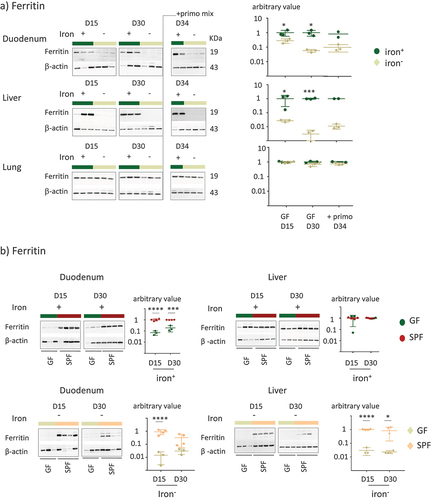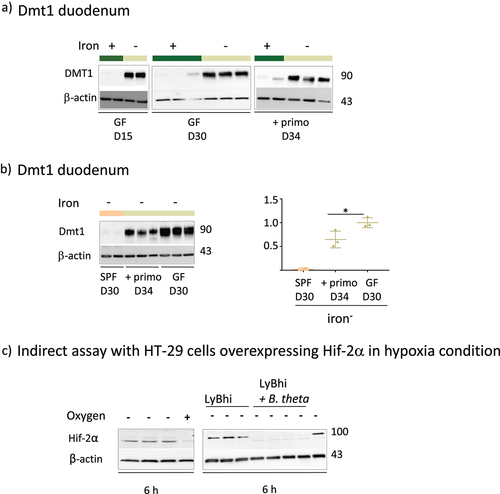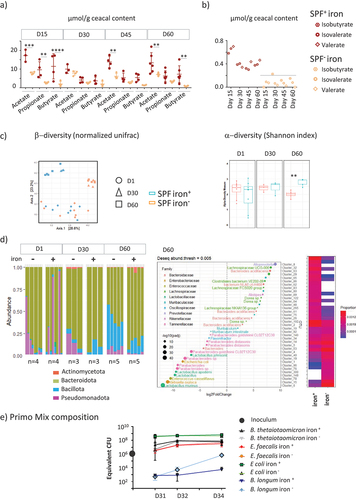a) Acetate, proprionate, butyrate, and b) minor short chain fatty acids were measured in the cecum of SPF mice at D15, D30, D45, and D60 from the iron
− and iron
+ groups. The line indicates the threshold of detection (under 0.4 µmol/g).
p values < .005 (**), < .0005 (***), and < .0001 (****) indicate the statistical difference between groups fed diets with and without iron by two-way ANOVA with Sidak’s multiple comparison test. c) diversity index of the microbiota in SPF mice receiving the two diets for 1, 30, and 60 days.Left panel:


-diversity by the normalized UNIFRAC index. Right panel: box plot showing


-diversity using the Shannon index.
p values < .005 (**) indicate the statistical difference between groups fed diets with and without iron by two-way ANOVA with Sidak’s multiple comparison test. d) Microbiota composition based on 16 S sequences from fecal samples of mice from the iron
− and iron
+ groups at different time points. Left panel: phylum level. Right panel: different operational taxonomic units expressed on D60 as a function of diet. e) At D30, GF mice were orally inoculated with a mixture (


) containing 10
6 CFU of
Enterococcus faecalis (strain X98),
Bacteroides thetaiotaomicron (strain L55),
Escherichia coli (strain CEC15), and
Bifidobacterium longum (strain L74). Each strain was equivalently represented in the inoculum. Quantification by real-time PCR of each primo-colonizing strain one day (D31), two days (D32), and four days (D34) after inoculation for the iron
+ (n = 2) and iron
− (n = 2) groups.
